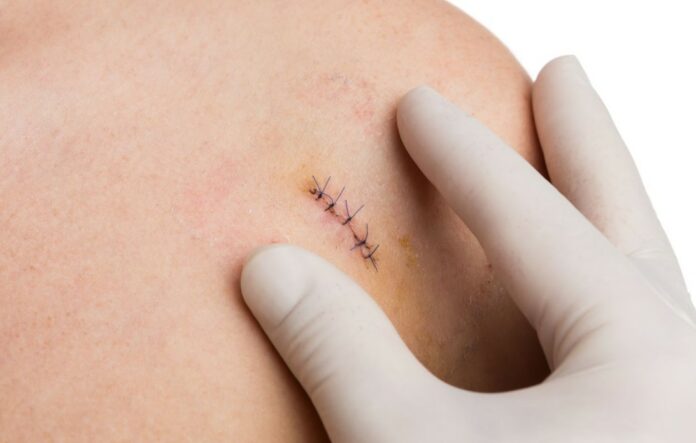Closing an external or internal wound is one of the basic responsibilities of a medical practitioner. It may be difficult at first, especially when it comes to internal organs and tissues, but you’ll get used to it after a while.
One of the most important medical tools when closing a wound is a suture. Also known as stitches, a suture is a thin, thread-like stitch attached to a needle used by doctors to sew and repair open parts of cuts and wounds. Also, it’s often used in surgical operations.
Sutures come in different types. Usually, doctors choose a type appropriate for the medical procedure or wound. Since they’re often used when performing surgery, your doctor would probably choose an absorbable one. So, what is an absorbable suture, and how are they used?
What Is An Absorbable Suture?
As its name implies, it’s a suture that naturally dissolves and gets absorbed by the body. It doesn’t require to be removed by a doctor, which is the case for non-absorbable.
Unlike non-absorbable sutures, which are often made from silk, nylon, or polyester, absorbable sutures are made from natural (animal intestines) and artificial fibres. These fibres naturally dissolve in the body as the wound or cut heals over time.
Furthermore, absorbable sutures can be purchased online. You can search for them on your browser and have them delivered right away. You may also visit any nearest medical supply provider in your area.
What Are The Uses Of Absorbable Sutures?
There are different types of absorbable sutures, each of which has a different use depending on the wound or medical procedure. That means you can’t use a specific type for other purposes.
Here are the different types of absorbable sutures and their uses:
- Polyglactin Suture: This is a synthetic braided suture used to repair lacerations in hand and face. It mustn’t be used for neurological and cardiovascular surgical operations.
- Gut Suture: This is a monofilament suture made from natural sources. It’s used to close internal soft tissue lacerations and wounds. And like polyglactin sutures, it’s not ideal for neurological and cardiovascular operations.
- Poliglecaprone Suture: Unlike gut sutures, poliglecaprone sutures are monofilament sutures made from synthetic dissolvable materials. It is used for general soft tissue lacerations and shouldn’t be applied to neurological and cardiovascular operations.
- Polydioxanone Suture: This is another suture made from synthetic monofilament fibres used to repair a wide range of soft tissue lacerations and wounds (e.g., abdominal cuts). Also, it’s used for pediatric cardiac operations.

What Are The Advantages Of Absorbable Sutures?
The main advantage of using absorbable sutures is their ability to break down, dissolve, and be absorbed by the body over time. This makes them an ideal option for closing and repairing wounds and lacerations during surgery, especially when it comes to soft tissues and internal organs.
Another advantage of absorbable stitches is their incomparable flexibility compared to non-absorbable ones. This enables doctors to seal the wound and laceration according to its shape. This is ideal for healing spongy surgical areas and rigged wounds.
What Are The Disadvantages Of Absorbable Sutures?
Although absorbable sutures are great because they don’t need to be removed, they may not last as long as non-absorbable ones. Because of this, deep wounds and lacerations may tend to open once the sutures are dissolved and absorbed by the body.
But don’t worry. Experts believe that wounds and cuts closed using absorbable stitches are less likely to open than their non-absorbable counterparts.
Also, keep in mind that absorbable sutures may cause sensitivities since they’re made from foreign materials. This may cause unwanted irritations and delay the healing process.
How Long Does It Take For Absorbable Sutures To Dissolve?
The answer depends on the type of absorbable suture used. Usually, doctors choose a suture based on the procedure and wound healing duration.
For example, a wound from a C-section operation may take a few weeks to heal completely. If that’s the case, doctors will select a suture made from a material that can dissolve for a few weeks.
Some absorbable sutures may dissolve after a few months. This makes them ideal for large cuts and lacerations, such as hip replacement operations.
Is It Okay To Remove Absorbable Sutures?
As much as possible, it’s best not to remove it unless a doctor says so because it can lead to problems, such as:
- Wound reopening
- Scarring
- Infection
- Slow healing
- Additional medical care
If you want to remove the stitches because they itch, follow these simple tips instead:
- Apply a cold compress to the affected area
- Take antihistamines like Benadryl
- Cover the wound to avoid infection and irritation
Final Words
Absorbable sutures are stitches that naturally dissolve over time. They don’t need to be removed unless the doctor says so. Otherwise, complications may arise, such as irritation, infection, scarring, and wound reopening. And if the affected area becomes itchy, apply some home remedies, such as cold compress and antihistamines.


